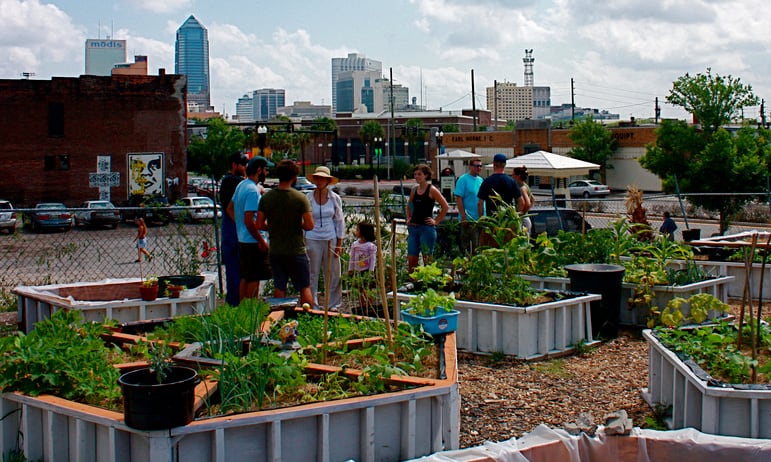The Best Strategy To Use For City Blooming
The Best Strategy To Use For City Blooming
Blog Article
Excitement About City Blooming
Table of ContentsNot known Details About City Blooming Some Ideas on City Blooming You Need To KnowIndicators on City Blooming You Should KnowThe Best Guide To City BloomingThe Best Strategy To Use For City Blooming
Intrigued in growing food for sale in the City of Chicago? Below is a checklist of frequently asked questions pertaining to the regulations and policies that growers need to think about when intending a city agriculture job.
The zoning amendment does not change any type of various other codes dealing with composting, building permits, purchasing or renting City possessed home, business licenses or ecological contamination. There are existing codes that manage these issues and they continue to be in complete impact and may apply to your job. Neighborhood yards are typically had or managed by public entities, public organizations or community-based companies and preserved by volunteers.
Urban farms expand food that is planned to be offered, either on a nonprofit or for-profit basis. As a result of their business function, urban ranches call for a company license. Yes. A neighborhood yard is allowed to market surplus generate that was grown on website if the sales are accessory or secondary to the yard's key objective explained over.
Get This Report about City Blooming
The amount of compost product can not surpass 25 cubic backyards at any type of given time according to the criteria in 7-28-715 of the City's Municipal Code. Because the dirt at the majority of new yard websites requires modifying, compost, dirt, wood chips, or other materials can be gotten to build or improve the growing area.

If a structure authorization is required after that the hoophouse will certainly be considered an accessory building. You can learn more regarding the structure authorization needs by getting in touch with the Division of Structures. The 25,000-square-foot size restriction is planned to stop a solitary neighborhood garden from controling a provided block or interfering with the block's existing residential or business personality.
The limit does not apply to yards situated in Public Open Area (POS) areas. Can there be more than one area yard that is 25,000 square feet on a solitary block? Fence is not required, nonetheless, yards that have big vehicle parking locations might be needed to wikipedia reference set up fence or various other landscaping features.
Not known Incorrect Statements About City Blooming
B1 & B2 districts call for that all business usage activities be performed inside your home. Is fence needed for urban ranches? Fences may be needed, along with landscaping and screening, for particular parking locations and exterior job or storage locations depending on location and the certain task taking location.
Urban farms require building authorizations and zoning approvals prior to building and construction (container and raised bed gardening etc.). Various other forms of city evaluation might be needed depending on particular structures, tasks, size, landscape design, licensing, public health and stormwater monitoring concerns.
The Department of Business Matters and Consumer Security can help figure out the particular type of organization certificate that's required. Off road parking is required for many business tasks in Chicago. The called for number of vehicle parking areas is based on the number of employees working on website and not the square video of the growing area.
The Ultimate Guide To City Blooming

A city farm can market compost product produced on site, however, the procedure must conform with the guidelines in 7-28-715 of the Chicago Municipal Code. Aquaponic systems are allowed inside your home on city ranches in many zoning districts.
Approximately 5 hives or colonies of honey may be kept as an accessory use. However, beekeepers have to sign up with the Illinois Department of Agriculture. For more details concerning the suggested zoning amendment you might get in touch with the Division of Housing and Economic Development, Bureau of Preparation and Zoning at 312.744.8563.
Farming in cities and urban locations A city farm in Chicago. Urban agriculture describes numerous methods of cultivating. http://peterjackson.mee.nu/do_you_ever_have_a_dream#c2110, handling, and distributing food in metropolitan areas. The term also relates to the location tasks of animal husbandry, tank farming, beekeeping, and cultivation in a city context. Urban farming is differentiated from peri-urban agriculture, which happens in rural locations at the side of residential areas.
Little Known Facts About City Blooming.
It can entail an activity of natural cultivators, "foodies" and "locavores", who look for to create social media networks started on a common ethos of nature and neighborhood holism. These networks can establish by means of official institutional support, becoming integrated into neighborhood town planning as a "shift town" motion for sustainable city growth.
The much more direct access to fresh veggie, fruit, and meat items that might be realised with metropolitan farming can boost food protection and food safety while reducing food miles, leading to lower greenhouse gas discharges, thus adding to environment change reduction. Some of the very first proof of city agriculture comes from Mesopotamia.
Report this page